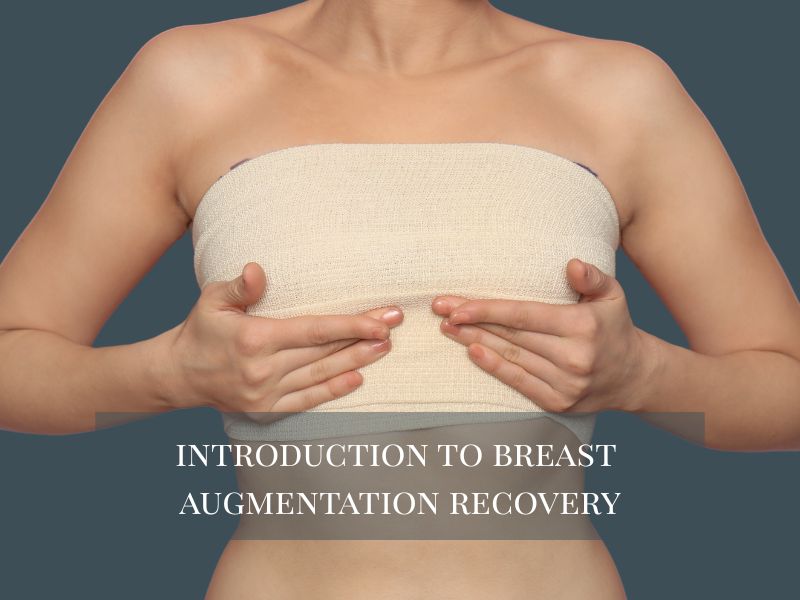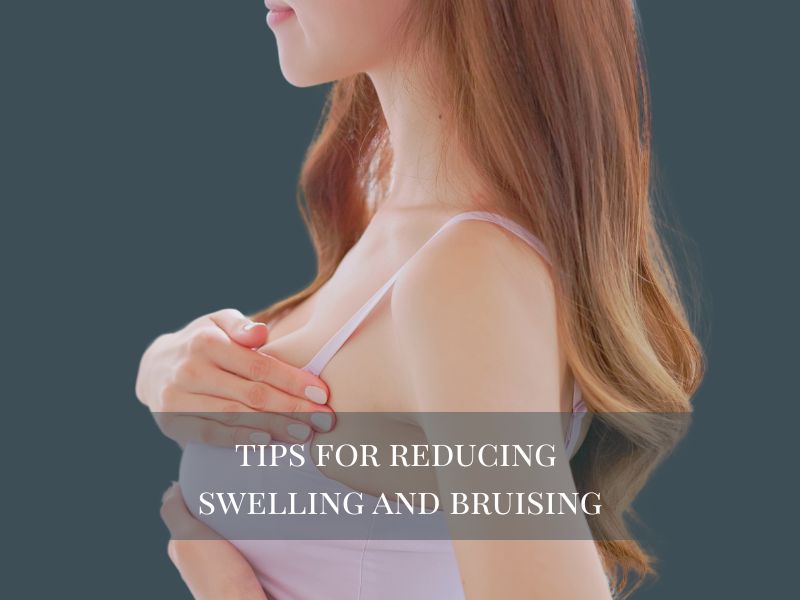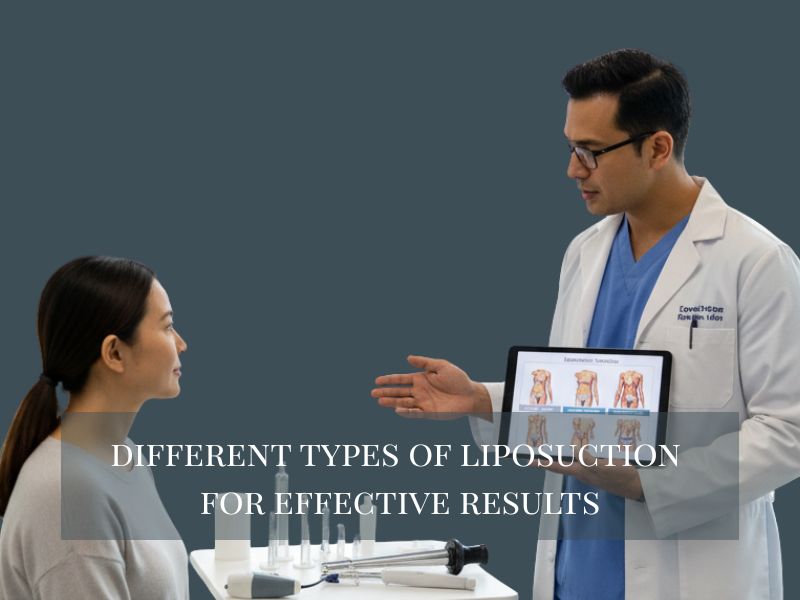If you’re preparing for or healing from breast augmentation procedure, this guide will walk you through the recovery process with clarity. Healing can feel a little daunting at first, but with the right information, it becomes much more manageable.
From tips on managing discomfort to knowing when it’s safe to ease back into your routine, we’ll cover everything you need to feel confident and cared for throughout your recovery.
Table of Contents
ToggleIntroduction to Breast Augmentation Recovery

Recovery from breast augmentation surgery is an essential phase that allows your body to heal and adjust to the breast implants. While some discomfort, swelling, and bruising are normal, following post-operative instructions will help ensure a smooth healing process.
The first few weeks require patience and proper care to minimize complications and promote optimal results. Rest, hydration, and avoiding strenuous activities will support your body’s recovery. With time and adherence to medical guidelines, you will be able to enjoy your enhanced appearance with confidence.
What To Expect Immediately After breast Surgery
Immediately after breast augmentation surgery, you will feel groggy due to anesthesia and may experience tightness or pressure in your chest. Swelling, bruising, and moderate pain are common, and your surgeon will likely apply bandages or a compression garment for support.
The first 24-48 hours are crucial for rest and limited movement, so having someone assist you with daily tasks is recommended. You may also have drainage tubes, which will be removed during a follow-up visit. Closely following your surgeon’s post-operative care instructions will help set the foundation for a smooth recovery.
Managing Pain and Discomfort
Pain and discomfort are most intense in the first few days after breast surgery, but they can be managed effectively with prescribed medications if necessary or over-the-counter options.
Ice packs applied to the chest area, as directed by your surgeon, can help reduce swelling and alleviate discomfort. Wearing a supportive bra will also minimize movement and provide added relief during the healing process. It’s important to take pain medication on schedule rather than waiting for pain to become severe.
Staying well-rested and avoiding unnecessary strain will contribute to a more comfortable recovery.
Tips for Reducing Swelling and Bruising

Swelling and bruising are natural side effects of the procedure, but there are ways to minimize them during healing. Keeping your upper body elevated while resting can reduce fluid buildup and aid circulation. Cold compresses applied in the first few days can help decrease swelling and provide comfort.
Avoiding salty foods, staying hydrated, and wearing a compression garment as instructed will further help manage post-surgical swelling. Closely following your post-op care plan will ensure the best possible healing outcome.
You can check out our other tips for breast augmentation recovery as well.
Activity Restrictions and When You Can Resume Normal Activities
For the first few weeks, you should avoid heavy lifting, strenuous exercise, and excessive arm movements to prevent strain on your tissues as they heal. Most patients can resume light activities, such as walking, within a few days, but high-impact workouts should be postponed for at least 4 to 6 weeks.
Returning to work depends on your job’s physical demands, but many patients are able to resume non-strenuous jobs within a week. Your surgeon will assess the progress of your healing and let you know when it’s safe to increase your activity levels. Rushing into intense physical activity too soon can increase the risk of complications and prolong recovery.
Caring for Your Incisions and Monitoring for Complications
Proper incision care is essential for preventing infection and promoting optimal healing. At Aesthera Plastic Surgery, your surgeon will provide detailed instructions on how to clean your incisions, change dressings, and apply any recommended ointments.
Avoid submerging your incisions in water until you receive clearance from your doctor, and wear loose-fitting clothing to prevent irritation. Be mindful of any unusual redness, swelling, or discharge, as these could be signs of infection. Contact your surgeon immediately if you experience persistent pain after breast augmentation, fever, or any other concerning symptoms.
Frequently Asked Questions
How long does it take to recover from breast augmentation surgery?
Most patients start feeling better within 1 to 2 weeks, though full recovery can take several months. Swelling and sensitivity may persist for several weeks, and your final results will take shape gradually. The majority of healing occurs within the first 6 weeks, but residual swelling can last up to 6 months.
Following your surgeon’s recovery plan and attending follow-up appointments will ensure a successful healing process. Being patient with your body’s recovery timeline will lead to the best results.
What can I do to manage pain and discomfort after breast augmentation?
Pain management starts with taking prescribed or over-the-counter pain medications as directed by your surgeon. Staying ahead of pain by taking medications on schedule can prevent unnecessary distress.
Using ice packs, wearing a supportive bra, and avoiding sudden movements will help minimize discomfort. Keeping a comfortable resting position and avoiding overexertion will also contribute to a smoother recovery. If pain worsens instead of improving, contact your surgeon for additional guidance.
When can I resume normal activities, including exercise, after breast implant surgery?
Light activities, such as short walks, can typically be resumed within a few days to promote circulation. However, strenuous activities, including weightlifting and high-impact exercises, should be avoided for at least 4 to 6 weeks.
Returning to work depends on the physical demands of your job, with most non-strenuous jobs being manageable within a week. Always follow your surgeon’s recommendations on activity restrictions to avoid complications. Gradually easing back into your routine will help ensure an easier recovery.
How should I care for my incisions during recovery?
Keeping your incisions clean and dry is essential to prevent infection and reduce scarring. Your surgeon will provide specific care instructions, including how to clean the area and when to change dressings.
Avoid applying any creams or lotions to the incision site unless approved by your surgeon. Wearing soft, loose clothing can prevent unnecessary irritation while your incisions heal. Proper care will promote faster healing and improve the appearance of scars over time.
What are the signs of complications, and when should I contact my surgeon?
While mild swelling and discomfort are normal, severe pain, excessive redness, warmth, or unusual discharge from incisions may indicate complications.
Fever, shortness of breath, or uneven swelling could be signs of a serious complication requiring immediate medical attention. If you experience persistent pain that does not improve with pain medication, consult your surgeon right away.
It’s always better to seek medical advice early to prevent potential complications. Closely monitoring your healing and reporting concerns promptly will help ensure a safe and successful recovery.
Types of pain in breast augmentation procedure
Following surgery, it’s normal to experience various forms of discomfort as your body heals. The most intense pain typically occurs in the first few days and is often described as a throbbing or aching sensation around the breasts.
If your breast implants are placed under the chest muscles, you may feel significant tightness or soreness as these muscles stretch to accommodate the implants. Some patients also report shoulder pain, which can result from changes in posture due to the new weight on your chest.
As nerves in the area begin to regenerate, it is common to experience nerve pain, which can manifest as tingling or a sharp pain. These sensations are a normal part of the healing process and usually subside over several months. To help manage overall discomfort and swelling, it is often recommended to rest with your upper body slightly elevated
How much pain is normal during the initial recovery period after breast augmentation?
The question of how much pain to expect varies among individuals, but it’s typical to experience some significant discomfort for the first few days.
During the initial recovery period, soreness is usually concentrated in the breast area as the breast tissue swells and adjusts to the implants. This is a normal part of the healing as your new breast shape begins to settle.
What is the difference between a breast lift or breast implants?
When deciding between a breast lift or breast implants, it’s important to consider your cosmetic goals. A breast lift (mastopexy) is designed to raise and reshape sagging breasts by removing excess skin and tightening the tissue, resulting in a perkier, more youthful appearance without significantly changing breast size.
Breast implants, however, are used to increase the size and fullness of the breasts with saline or silicone implants. This option is best for those who want to enhance their breast volume or alter their breast shape. In some cases, both a breast lift and breast implants can be combined to achieve both lift and added volume.
How long does swelling last after breast augmentation, and when should I be concerned about excessive swelling?
Swelling in the chest area is common after breast augmentation and typically peaks within the first few days, gradually improving over several weeks.
However, excessive swelling that worsens, is accompanied by severe pain, or appears uneven may signal complications such as blood clots or the formation of scar tissue.
While most swelling subsides within a few weeks, mild swelling can persist for up to six months as your body heals and the implants settle for a more natural appearance.
If you notice persistent or worsening swelling around the incision sites, contact your surgeon promptly. Your doctor may recommend muscle relaxers or additional treatments to support your recovery and ensure a safe outcome.
Breast augmentation vs breast lift: what’s the difference?
Breast lift and breast augmentation address different concerns for breast enhancement. Breast augmentation is designed to increase breast size and fullness using implants, making it ideal for those who want larger or more rounded breasts.
In contrast, a breast lift focuses on lifting and reshaping sagging breasts by removing excess skin and tightening tissue, which improves breast position and contour without significantly changing size.
For some, combining breast augmentation and a breast lift provides both added volume and a more youthful, elevated shape. Consulting with a board-certified plastic surgeon is the best way to determine which procedure—or combination—will help you achieve your desired results.
schedule your breast augmentation consultation
At Aesthera Plastic Surgery, we’re committed to making your breast augmentation journey as smooth and successful as possible. By following your post-op care instructions and giving your body the time it needs to heal, you’ll be well on your way to enjoying your beautiful results.
If you have any questions or concerns during your recovery, don’t hesitate to reach out to our expert team for guidance and support. Your comfort and confidence are our top priorities, and we’re here for you every step of the way.
Ready to take the next step? Contact Aesthera Plastic Surgery today to schedule a consultation and start your transformation with a team you can trust!



